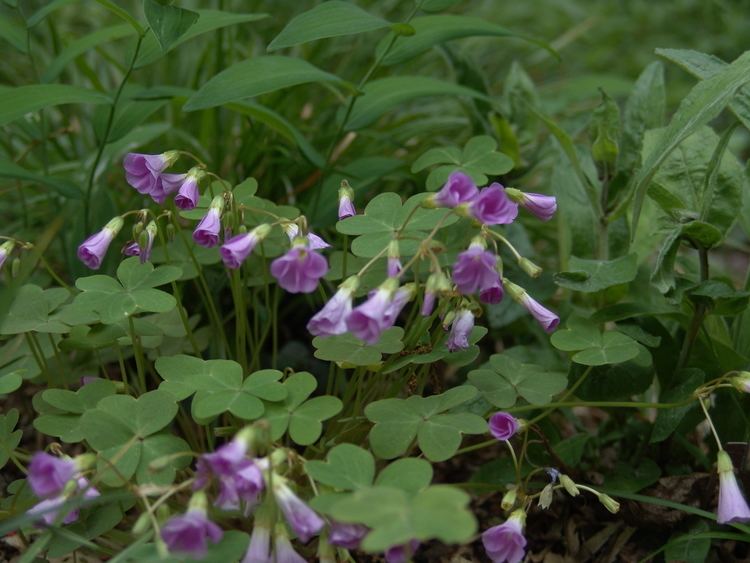Rank Species | Higher classification Wood sorrels | |
 | ||
Similar Wood sorrels, Oxalidaceae, Common Yellow Woodsorrel, Oxalis latifolia, Oxalis montana | ||
Oxalis violacea, the violet wood-sorrel, is a perennial plant and herb in the Oxalidaceae family. Oxalis species are also known as sour grass, sour trefoil, and shamrock.
Contents

Distribution
It is native plant in much of the United States, from the Rocky Mountains east to the Atlantic Ocean and Gulf of Mexico coasts, and through Eastern Canada. It has a tendency to cluster in open places in damp woods and on stream banks, and in moist prairies.
The plant is listed as a threatened or endangered species in five eastern U.S. states.
Description
Oxalis violacea emerges in early spring from an underground bulb, and grows to an average height of approximately 7 inches. The three-part leaves have heart-shaped leaflets. It is similar in appearance to small clovers such as the shamrock.
The plant bears violet colored flowers above the foliage, during April, May, and June.
Medicinal
Oxalis violacea was used as a medicinal plant by Native Americans, including the Cherokee and Pawnee peoples.
Culinary

All parts of the plant are edible; flowers, leaves, stems, and bulb. Oxalis is from the Greek word meaning sour, and this plant has a sour juice. It is used in salads. Moderate use of plant is advisable, as it should not be eaten in large quantities due to a high concentration of oxalic acid, ("salt of lemons") which can be poisonous.
It was a traditional food source of the Native American Apache, Cherokee, Omaha, Pawnee, and Ponca peoples.
Cultivation
Oxalis violacea is cultivated as an ornamental plant, for use as a flowering groundcover or perennial plant in traditional and native plant gardens, and for natural landscaping projects. It spreads rapidly by runners and bulbs. In gardens the plant prefers partial shade and moisture.
